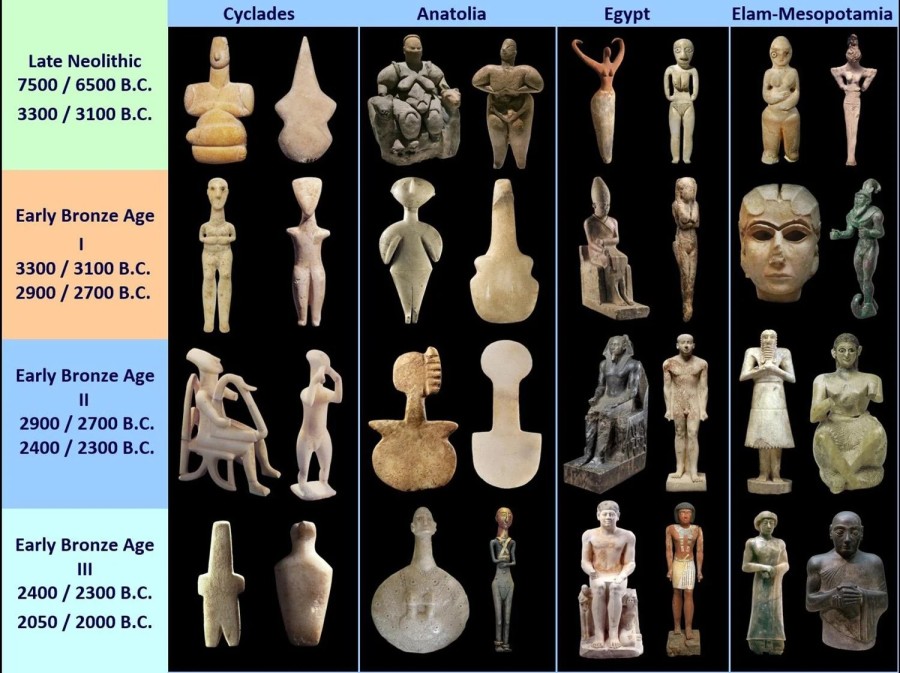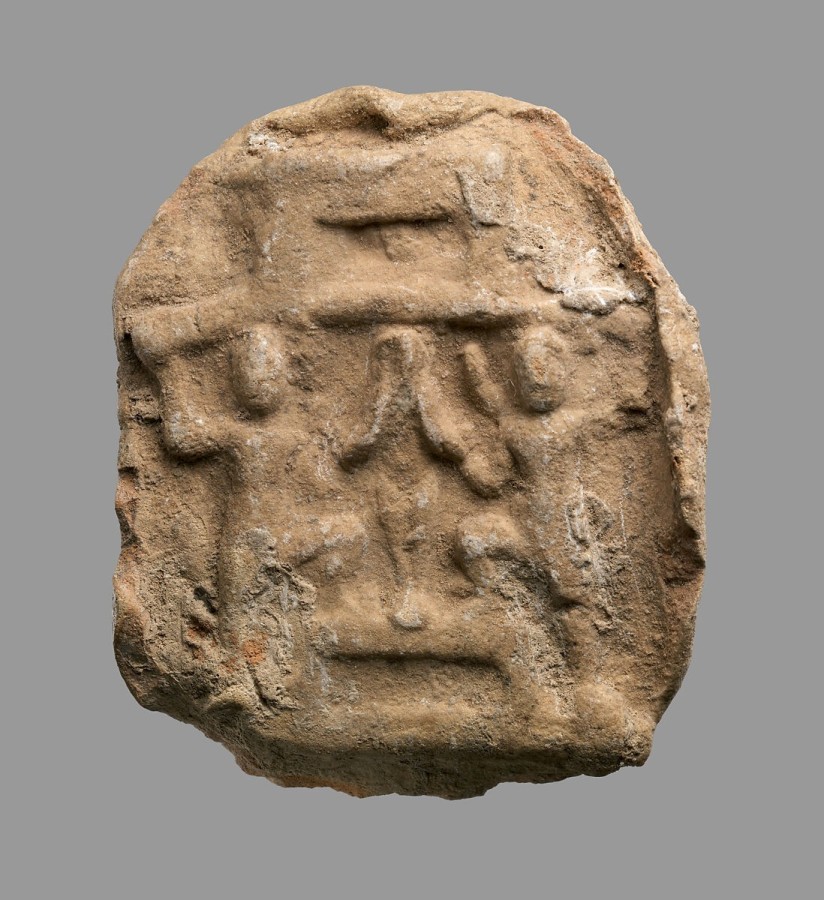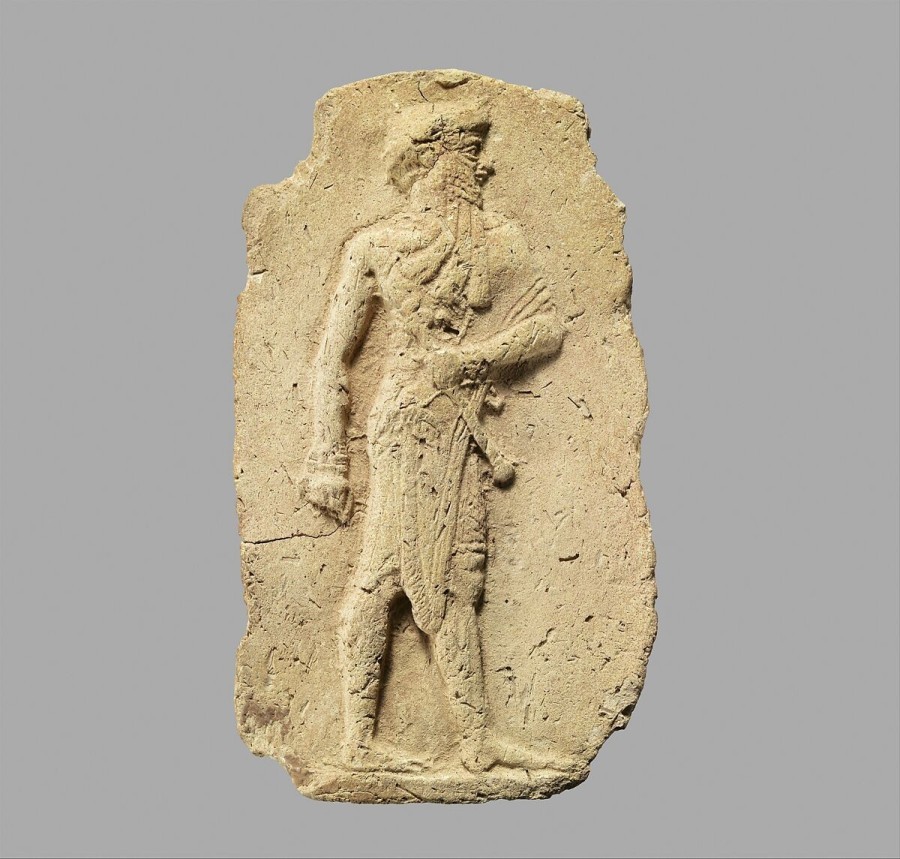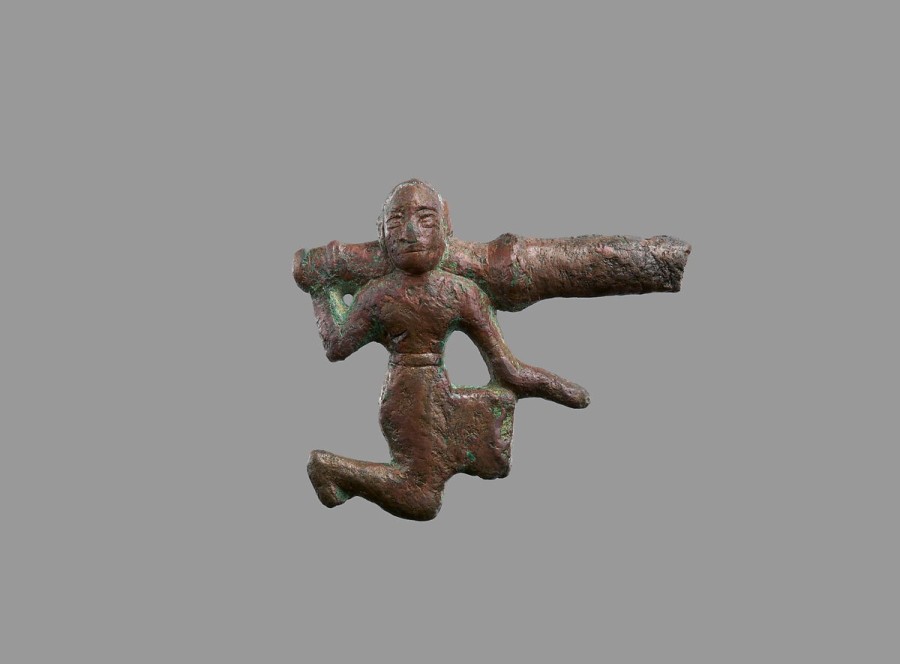Mesopotamian Early Bronze Age Art. Table of evolution. circa 3300 − 2000 B.C. (1500 x 1110)
Finely crafted small openwork bronzes produced in the early second millennium B.C. are among the more enigmatic objects known from the ancient Near East. Very few examples have survived, and those that are known vary in complexity and design.

Openwork bronzes are mold-made, like terracotta plaques of the same period. Yet unlike these objects, which have flat backs and were produced by pressing clay into an open-face mold (32.39.2), the bronzes are three-dimensional (1998.31) and were produced using a specific procedure: the lost-wax casting method. This process relied on the creation of a three-dimensional ceramic mold from a wax model (invested with clay) that was fired, allowing the wax to pour out, and then filled with metal. In order to access the bronze object, the mold was then destroyed. So whereas the potency of terracotta plaques appears to have derived, in part, from the ability to produce multiple identical images easily, the openwork bronzes are resolutely individualistic—difficult to make and difficult to copy. Unlike the ubiquitous terracotta plaques, a small corpus of openwork bronzes is known today, a reflection perhaps of both their relative rarity in antiquity and the propensity for melting down bronze to recast it.

Simpler bronzes feature a single opening and have minimal imagery, as in an example from the Museum’s collection consisting of a pair of forearms adorned with bracelets that grasp a roller (1980.407.3). More complex examples are figural, comprising two or more figures symmetrically arranged and fully modeled. Figures are typically depicted grasping, supporting, or framing the openings in the metalwork (1984.454.1a,b). Front-facing standing nude females and kilted males shown in mixed profile either kneeling or standing with one leg raised (1983.117) appear on multiple examples, and pairs of animals also appear (1998.31). Today, at least a dozen complex figural plaques are known, including these examples in the Metropolitan’s collection. While the range of figures used on openwork bronzes is limited and a preference for symmetry prevails, the figures can be arranged in a variety of ways. All of the known examples feature at least one bracket—which could include a roller (1980.407.1; 1984.454.2), ring (1984.454.1a,b), or slot (1998.31; 1980.407.1) for attachment—and the well-preserved complex examples typically include an upper and lower opening.

Early studies of openwork bronzes debated their date and center of production. Examples excavated at Karum Kanesh (modern Kültepe), a trading colony in Anatolia occupied during the early second millennium B.C., helped date the larger corpus, although the Kültepe pieces have been interpreted as imports rather than locally manufactured products. The iconography of the figural bronzes fits well with the Mesopotamian arts of the Isin-Larsa and Old Babylonian periods (ca. 2004–1595 B.C.), and most examples are thought to have been produced in this region.
 The uses of these bronzes in antiquity is not fully understood, and a variety of possible functions have been proposed, including their use as harness decoration, clasps, or buckles, furniture fittings, and implements used in the production of textiles. These proposals are all based on the idea that cords, straps, or fabric would have been threaded through or attached to the different openings. Most of the known examples do not come from controlled archaeological excavations, and the climate of the region does not support the preservation of materials like textiles, making it difficult to evaluate the various proposals. The formal qualities of the objects, however, provide some hints: the complex figural bronzes are all oriented vertically, and careful attention was paid to the fully modeled backs of the objects during production (1998.31), suggesting that they may have been viewed from multiple angles or, at the very least, that these objects were not meant to lie flush against a flat surface.
The uses of these bronzes in antiquity is not fully understood, and a variety of possible functions have been proposed, including their use as harness decoration, clasps, or buckles, furniture fittings, and implements used in the production of textiles. These proposals are all based on the idea that cords, straps, or fabric would have been threaded through or attached to the different openings. Most of the known examples do not come from controlled archaeological excavations, and the climate of the region does not support the preservation of materials like textiles, making it difficult to evaluate the various proposals. The formal qualities of the objects, however, provide some hints: the complex figural bronzes are all oriented vertically, and careful attention was paid to the fully modeled backs of the objects during production (1998.31), suggesting that they may have been viewed from multiple angles or, at the very least, that these objects were not meant to lie flush against a flat surface.

The iconography of the openwork pieces may also point to their function. It has been observed that the single lock of hair that appears on many of the kilted male figures (1980.407.1) can also be found on glyptic images of temple attendants during the same period. It has been tentatively suggested that the bronzes were used in temple contexts as pendant weights or counterpoises used in the production of special textiles, perhaps “cross-bands” for the statue of a goddess. Such cross-bands can be seen on ancient Near Eastern nude female figurines (51.7.1) and may also be evoked by the central design that can be found on some of the bronzes (1984.454.1a,b), but are not depicted on the nude female figures that appear on these objects, which are often shown with other types of jewelry. Overall, it seems likely that the bronzes—with their various types and arrangements of openings—had multiple uses. Their appeal may have even led to imitation in other mediums (1998.240).
Openwork bronzes appear to have circulated throughout the lands of the ancient Near East. In addition to the examples found at the trading colony in Anatolia, many of the objects were, at one time or another, identified as coming from Luristan in western Iran. Yet most of the pieces are Babylonian in style, suggesting that the bronzes traveled as part of the international connections that stitched together communities across Anatolia, Mesopotamia, Iran, and beyond. On the road, the openwork bronzes may have retained their original function or been repurposed or even reinterpreted as they entered new lives in new communities.